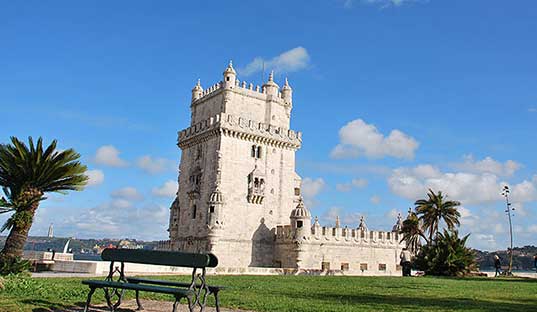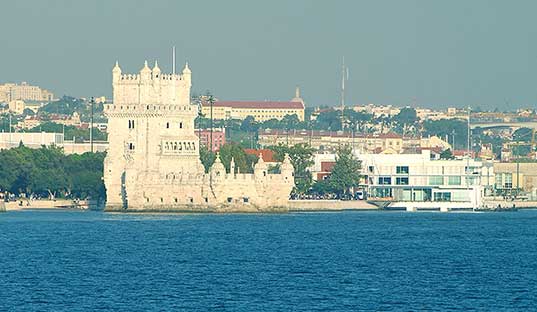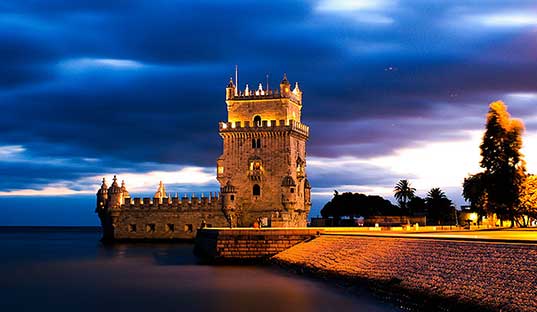Torre de Belém
Belém Tower was built in the Age of the Discoveries (when defending the city was of paramont importance) in tribute to the patron saint of the city, Saint Vicente.
In order to enhance Lisbon’s defence, King João II drew up a plan that consisted of forming a three-fortress-defence on the Tagus’s estuary. It formed a triangle and on each angle, a fortress was constructed: Cascais's fortress on the right bank, S. Sebastião da Caparica on the left bank and Belém Tower in the water.
The tower is replete with Manueline decoration, symbols of the King’s power: cables encircling the building and terminating in elegant knots, armillary spheres, crosses of the Military Order of Christ and naturalistic elements such as the rhinoceros, the first such representation in stone known in Europe.
In time, with the construction of new, more modern and more effective defences, the Tower of Belém lost its role as defender of the entrance of the River Tagus.
As centuries passed, new functions were given to the tower. It was a customs control point, a telegraph station and even a lighthouse.
It also served as a political prison, its storerooms transformed into dungeons, since the time when Philip II of Spain became king of Portugal (1580) and during periods of political unrest. Finally, in 1983 UNESCO classified it as a World Heritage Site.
In order to enhance Lisbon’s defence, King João II drew up a plan that consisted of forming a three-fortress-defence on the Tagus’s estuary. It formed a triangle and on each angle, a fortress was constructed: Cascais's fortress on the right bank, S. Sebastião da Caparica on the left bank and Belém Tower in the water.
The tower is replete with Manueline decoration, symbols of the King’s power: cables encircling the building and terminating in elegant knots, armillary spheres, crosses of the Military Order of Christ and naturalistic elements such as the rhinoceros, the first such representation in stone known in Europe.
In time, with the construction of new, more modern and more effective defences, the Tower of Belém lost its role as defender of the entrance of the River Tagus.
As centuries passed, new functions were given to the tower. It was a customs control point, a telegraph station and even a lighthouse.
It also served as a political prison, its storerooms transformed into dungeons, since the time when Philip II of Spain became king of Portugal (1580) and during periods of political unrest. Finally, in 1983 UNESCO classified it as a World Heritage Site.














